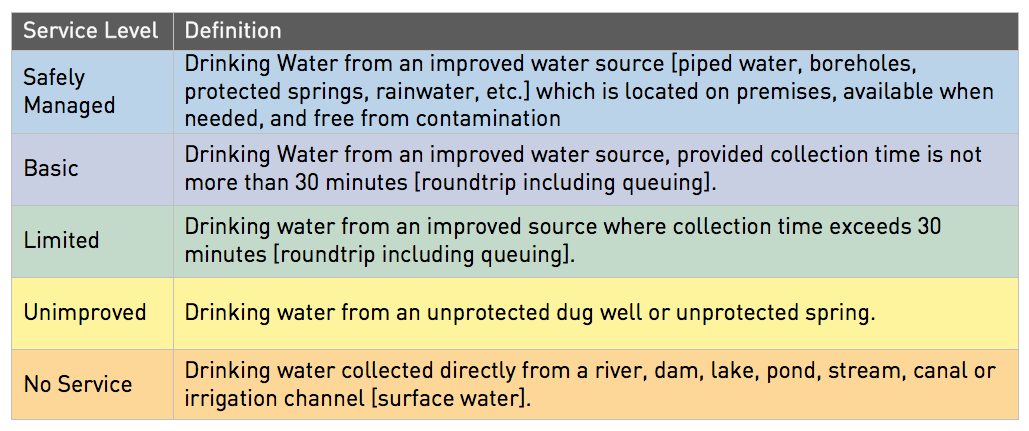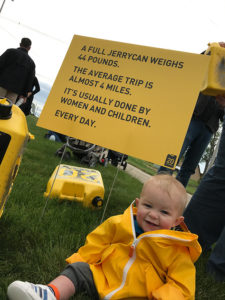Before we start talking about solutions to the global water crisis – let’s get technical! Specifically, we need a shared language to talk about what different solutions accomplish for people who need clean water.
To do that, we’re going to turn to our friends at the “JMP” [Joint Monitoring Programme for Water Supply, Sanitation and Hygiene] – which is a collaboration between the WHO [World Health Organization] and UNICEF. The JMP has reported on the WASH sector since 1990. They measured progress toward achieving Millennium Development Goals. And now, they have the responsibility for monitoring progress toward the Sustainable Development Goals that were set in 2017.
Now, we could talk about the JMP, WASH Sector data, Millennium Development Goals, and Sustainable Development Goals for a really long time… but here is what it boils down to for WATER:
The JMP measures progress towards meeting Sustainable Development Goals including:
By 2030, achieve universal [meaning all locations, including home, schools, public spaces, etc.] and equitable [eliminating inequalities between groups of people] access [implies sufficient water to meet needs, close to home] to safe [free of contamination] and affordable [services are not cost-prohibitive] drinking water [water for drinking, cooking, food preparations and personal hygiene] for all [men, women, girls, boys, of all ages including people living with disabilities].
In order to be able to report accurately on progress, the JMP developed a tool called the “Drinking Water Ladder”. It uses three main criteria [location, availability, and free from contamination] to classify whether or not a household has access to water that meets the standards laid out in the Sustainable Development Goals.
JMP Drinking Water Ladder

 Are you still with me? Awesome. Here’s a picture of a really cute kid as your reward.
Are you still with me? Awesome. Here’s a picture of a really cute kid as your reward.
This may seem like a lot of gibberish… and you can call me crazy, but I think that every problem needs a shared language before we can start to talk about solutions.
How are we supposed to have a thoughtful conversation about household solutions versus community solutions, if we don’t first understand the goals, measurements, and definitions that allow us to compare the two.
Next month, we’ll continue our conversation by diving deeper into the “S” in WASH – Sanitation [also known as “Why We Care Where You Poop”].
P.S. If you’re really into data and want to know more, check out washdata.org.
